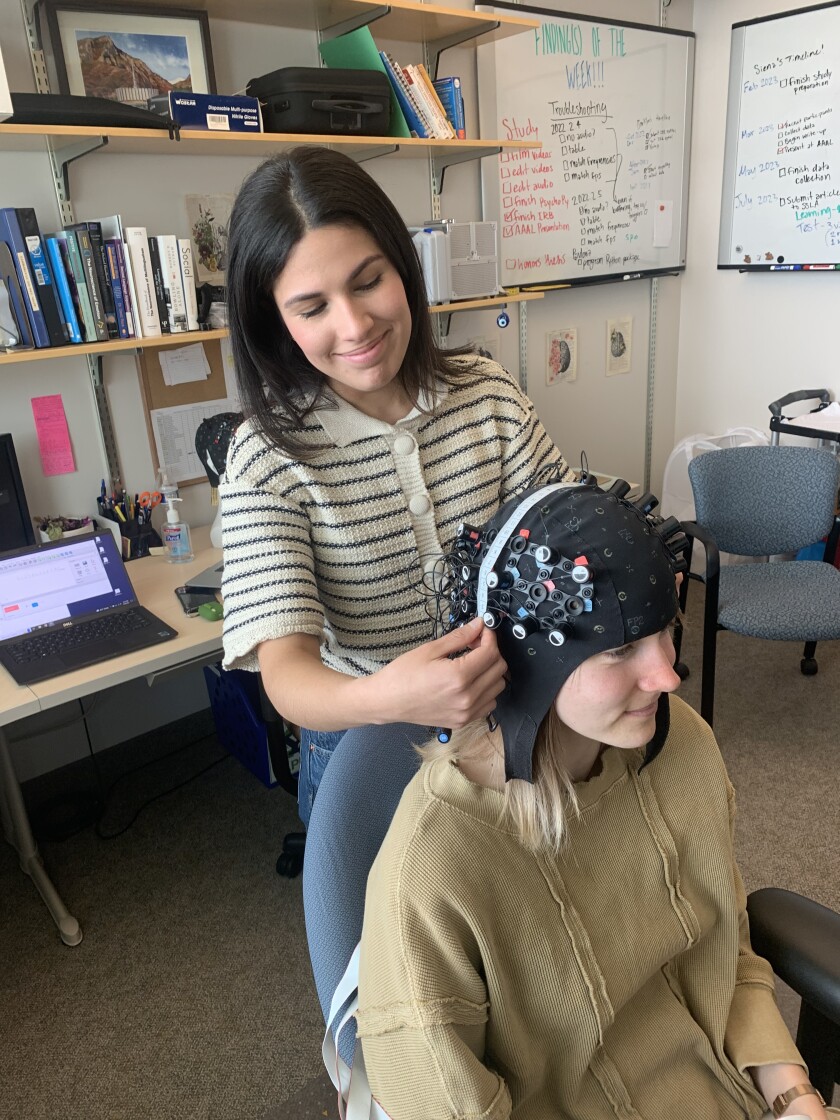Do Chinese speakers and English speakers process emotions the same way? According to one BYU grad, the answer might be no.
With over 60% of BYU undergrads being second-language speakers, hearing Russian spoken in the Life Sciences Building or seeing stacks of Chinese books in the library are common occurrences. While completing her master’s program at BYU, recent graduate Daniela Ortega (MA Linguistics ’24) wanted to learn more about the connection between emotions and language, specifically in multilingual people. With the help of her professors, international students, and the Language Sciences Laboratory, Ortega conducted research targeting the effects of language on emotional processing. In doing so, she found that second language acquisition improves as language learners come to recognize the culture’s understanding of emotions.
Neurons at Work

For this project, Ortega chose to study the differences between neural processing in native Chinese and native English speakers. Working closely with BYU’s International Student and Scholar Services Office and linguistics professor Dan Dewey (Second Language Acquisition and Teaching), she selected 16 native Chinese speakers and 16 native English speakers who spoke both English and Mandarin Chinese.
For the experiment, these participants were first shown a word or character in their native language. They then had five seconds to process the word on display—such as love, aisle, or sphere—and think of memories or feelings associated with it. Once they had these personal experiences in mind, Ortega says she would “ask them to rate the word by feeling—if they felt that it was a positive emotional word or a negative emotional word or just neutral.”
As they rated each word, Ortega recorded their brain activity using Functional Near Infrared Optical Imaging Systems (fNIRS), a machine that measures activity and blood flow in the brain. “We mostly looked at the prefrontal cortex, because that’s an area of the brain that is highly involved in emotional policing,” she says. “So, we were looking at both intensity of activation and at the location.” After completing this process in their native language, participants then repeated it in their second language.
Patterns in Processing
From this research, Ortega noted that processing in one’s first language was much more complex and intense than second language processing. Though this was not all too surprising to Ortega, she “found that the native Chinese speakers rated the words in English very similarly to native English speakers, but their brain activity looked different.” This indicated that immersion in a secondary language can teach language learners how to understand concepts and ideas in the context of their new environment or culture.

According to Ortega, this finding could prove very beneficial to language learners and potentially adjust the way languages are taught in the future. “With second language acquisition, we tend to focus a lot on [being in] a classroom and [learning] grammar, but obviously socializing is such an important part,” she says. “I think being able to better understand emotions in your second language can help you be more proficient and can definitely help you interact better in a job, at school, or in personal relationships.”
This research in hand, Ortega has been able to share preliminary data from these experiments at conferences in France and Ireland. She hopes that sharing her research will lead others to follow up on her studies and more fully explore “how bilingualism and culture interact with neural processing.” Ortega says, “I’m really grateful for the opportunity that I’ve had to not only conduct this research, but also to go to academic conferences and share [it] with other people.”
Learn more about research throughout the College here.
Learn more about the Linguistics MA program here.